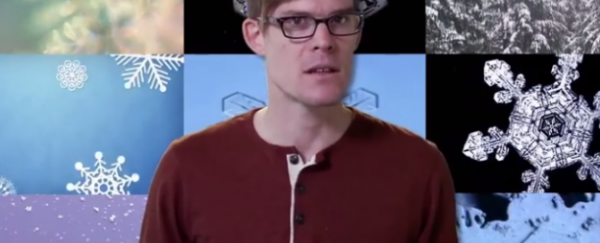
The idea that no two snowflakes are alike was formed back on 15 January 1885 in a town called Jericho in Vermont. A 20-year-old named Wilson Bentley managed to 'catch' a snowflake on a piece of black paper, whisked it under a microscope attached to a camera, and held his breath. What resulted was the first ever photograph of a snowflake, and it looked spectacular.
Bentley went on to forgo marriage and, you know, ever moving out of his mum's house, so he could take photos of snowflakes for the next 50 years. When you see what they looked like, though, and the idea that no one else had ever seen this array of shapes and patterns before, you can kind of understand why he got so obsessed.
"He called them 'masters of design', of course, we know there is no design in a snowflake. But that doesn't make them any less amazing," says Joe Hanson in this chilly episode of It's Okay To Be Smart. "Every plate, every branch, every needle on a needle on a needle - all of those details are what's called 'emergent properties'."
For snowflakes, these properties are based on some very simple rules of physics. In air or liquid water, molecules are bouncing off each other and anything else they come into contact with trillions of times per second. There's no way for us to know where each of these molecules are, or which direction they're facing, at any given moment. But then if you start to really cool things down, the molecules will start to move a bit sluggishly, and the hydrogen bonds between them will take over and settle the molecules into order.
Watch It's Okay To Be Smart above to discover how these tiny, frozen specks of dust take on the intricate and often incredibly complex shapes we know and love, and find out about the lady who once claimed she'd found two identical snowflakes.
Source: It's Okay To Be Smart
